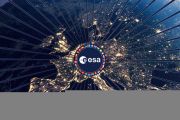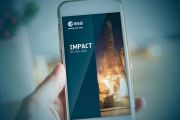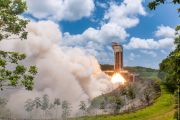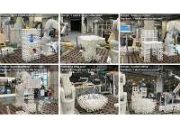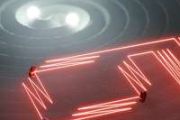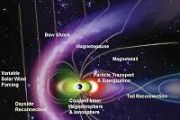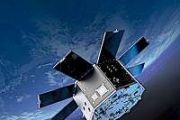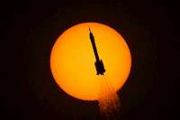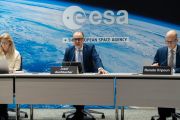
Copernical Team
Lunar landers could spray instant landing pads as they arrive at the moon
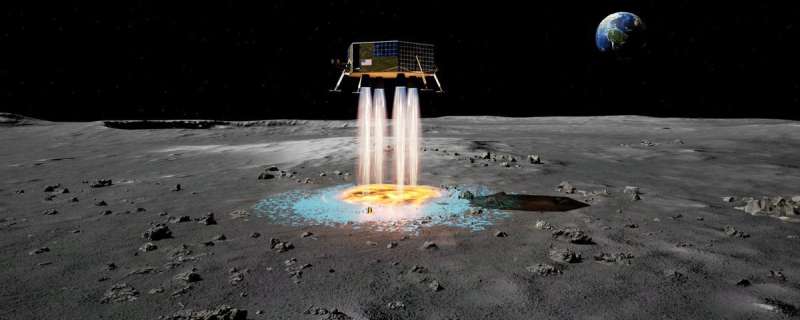
Space exploration requires all kinds of interesting solutions to complex problems. There is a branch of NASA designed to support the innovators trying to solve those problems—the Institute for Advanced Concepts (NIAC). They occasionally hand out grant funding to worthy projects trying to tackle some of these challenges. The results from one of those grants are now in, and they are intriguing. A team from Masten Space Systems, supported by Honeybee Robotics, Texas A&M, and the University of Central Florida, came up with a way a lunar lander could deposit its own landing pad on the way down.
Lunar dust poses a significant problem to any powered landers on the surface. The retrograde rockets needed to land on the moon's surface softly will also kick dust and rock up into the air, potentially damaging the lander itself or any surrounding human infrastructure.
Image: Cosmic kit

ESA astronaut Matthias Maurer is suited, booted and ready for his Cosmic Kiss mission. As a member of US Commercial Crew-3 he will be launched to the International Space Station in a Crew Dragon spacecraft in around one month's time for his first six-month stay in orbit.
Matthias is pictured in the SpaceX spacesuit that he will wear alongside his crew mates, NASA astronauts Kayla Barron, Thomas Marshburn and Raja Chari, during their journey to and from space.
Each SpaceX spacesuit is tailor-made for its wearer. The helmet is 3D printed and its gloves are designed to work with the touchscreens on board. The suit's primary purpose is to protect astronauts from the unlikely event of depressurisation. However, it also helps regulate an astronaut's body temperature and provides hearing and fire protection.
When an astronaut enters the Dragon capsule, they plug the suit into their seat using an umbilical. This provides the electronics to power communications, air to cool the suit and gas to pressurize the garment when needed.
This suit is only worn in the Crew Dragon capsule, not during spacewalks. Matthias is trained and certified in both the US Extravehicular Mobility Unit (EMU) and Russian Orlan spacesuits for any spacewalk he may perform in orbit.
Head in the sky: 8-year-old Brazilian girl dubbed world's youngest astronomer
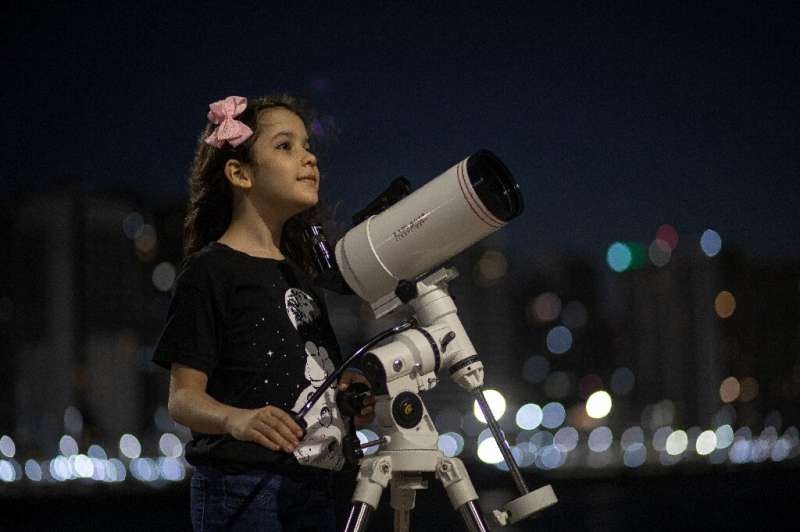
When Nicole Oliveira was just learning to walk, she would throw up her arms to reach for the stars in the sky.
Today, at just eight years of age, the Brazilian girl is known as the world's youngest astronomer, looking for asteroids as part of a NASA-affiliated program, attending international seminars and meeting with her country's top space and science figures.
In Oliveira's room, filled with posters of the solar system, miniature rockets and Star Wars figures, Nicolinha, as she is affectionately known, works on her computer studying images of the sky on two large screens.
The project, called Asteroid Hunters, is meant to introduce young people to science by giving them a chance to make space discoveries of their own.
Microscopic metavehicles powered by nothing but light
 Researchers from Chalmers University of Technology, Sweden, have succeeded in creating tiny vehicles powered by nothing but light. By layering an optical metasurface onto a microscopic particle, and then using a light source to control it, they succeeded in moving the tiny vehicles in a variety of complex and precise ways - and even using them to transport other objects.
Light has an inher
Researchers from Chalmers University of Technology, Sweden, have succeeded in creating tiny vehicles powered by nothing but light. By layering an optical metasurface onto a microscopic particle, and then using a light source to control it, they succeeded in moving the tiny vehicles in a variety of complex and precise ways - and even using them to transport other objects.
Light has an inher National Geospatial-Intelligence Agency funds Phase 4a of MagQuest Challenge
 The National Geospatial-Intelligence Agency (NGA) just launched the Demonstration Phase (Phase 4a) of its MagQuest Challenge to develop novel data collection approaches for the World Magnetic Model.
The WMM ultimately ensures the accuracy of navigation because it corrects for differences in magnetic forces at a user's location. The model is used by thousands of systems for mobile navigation app
The National Geospatial-Intelligence Agency (NGA) just launched the Demonstration Phase (Phase 4a) of its MagQuest Challenge to develop novel data collection approaches for the World Magnetic Model.
The WMM ultimately ensures the accuracy of navigation because it corrects for differences in magnetic forces at a user's location. The model is used by thousands of systems for mobile navigation app Climate change and its environmental impacts on crop growth
 The Earth is heating up. The effects of human-caused global climate change are becoming more and more apparent as we see more record-breaking heat waves, intense droughts, shifts in rainfall patterns and a rise in average temperatures. And these environmental changes touch every part of crop production.
NASA, along with partner agencies and organizations, monitors all of these environmenta
The Earth is heating up. The effects of human-caused global climate change are becoming more and more apparent as we see more record-breaking heat waves, intense droughts, shifts in rainfall patterns and a rise in average temperatures. And these environmental changes touch every part of crop production.
NASA, along with partner agencies and organizations, monitors all of these environmenta Nitrogen-fixing bacteria help clover plants grow in Mars-like soil
 If astronauts are to set up a base and spend extended periods of time on Mars, they're going to need to be able to synthesize water and grow their own food.
Growing conditions are quite different on the Red Planet, so scientists on Earth have been conducting experiments to better understand how plants will behave in Martian regolith.
New research, published Wednesday in the journ
If astronauts are to set up a base and spend extended periods of time on Mars, they're going to need to be able to synthesize water and grow their own food.
Growing conditions are quite different on the Red Planet, so scientists on Earth have been conducting experiments to better understand how plants will behave in Martian regolith.
New research, published Wednesday in the journ Microgravity on demand with Earth return through ESA's Boost!
 A new round-trip commercial space transportation service from 2022, backed by ESA, will enable companies to manufacture in space very pure and more capable materials, discover new pharmaceutical drugs and bring them back for use on Earth.
Space Forge, based in the UK, is working with partners to develop ForgeStar - a reusable suitcase-sized vehicle that can be lofted to space and which wil
A new round-trip commercial space transportation service from 2022, backed by ESA, will enable companies to manufacture in space very pure and more capable materials, discover new pharmaceutical drugs and bring them back for use on Earth.
Space Forge, based in the UK, is working with partners to develop ForgeStar - a reusable suitcase-sized vehicle that can be lofted to space and which wil Did a cosmic impact destroy an ancient city in the Jordan Valley
 In the Middle Bronze Age (about 3600 years ago or roughly 1650 BCE), the city of Tall el-Hammam was ascendant. Located on high ground in the southern Jordan Valley, northeast of the Dead Sea, the settlement in its time had become the largest continuously occupied Bronze Age city in the southern Levant, having hosted early civilization for a few thousand years. At that time, it was 10 times large
In the Middle Bronze Age (about 3600 years ago or roughly 1650 BCE), the city of Tall el-Hammam was ascendant. Located on high ground in the southern Jordan Valley, northeast of the Dead Sea, the settlement in its time had become the largest continuously occupied Bronze Age city in the southern Levant, having hosted early civilization for a few thousand years. At that time, it was 10 times large NASA launches new mission to monitor Earth's landscapes
 Landsat 9, a NASA satellite built to monitor the Earth's land surface, successfully launched at 2:12 p.m. EDT Monday from Vandenberg Space Force Base in California.
A joint mission with the U.S. Geological Survey (USGS), Landsat 9 lifted off on a United Launch Alliance Atlas V rocket from Vandenberg's Space Launch Complex 3E. Norway's Svalbard satellite-monitoring ground station acquired s
Landsat 9, a NASA satellite built to monitor the Earth's land surface, successfully launched at 2:12 p.m. EDT Monday from Vandenberg Space Force Base in California.
A joint mission with the U.S. Geological Survey (USGS), Landsat 9 lifted off on a United Launch Alliance Atlas V rocket from Vandenberg's Space Launch Complex 3E. Norway's Svalbard satellite-monitoring ground station acquired s 





